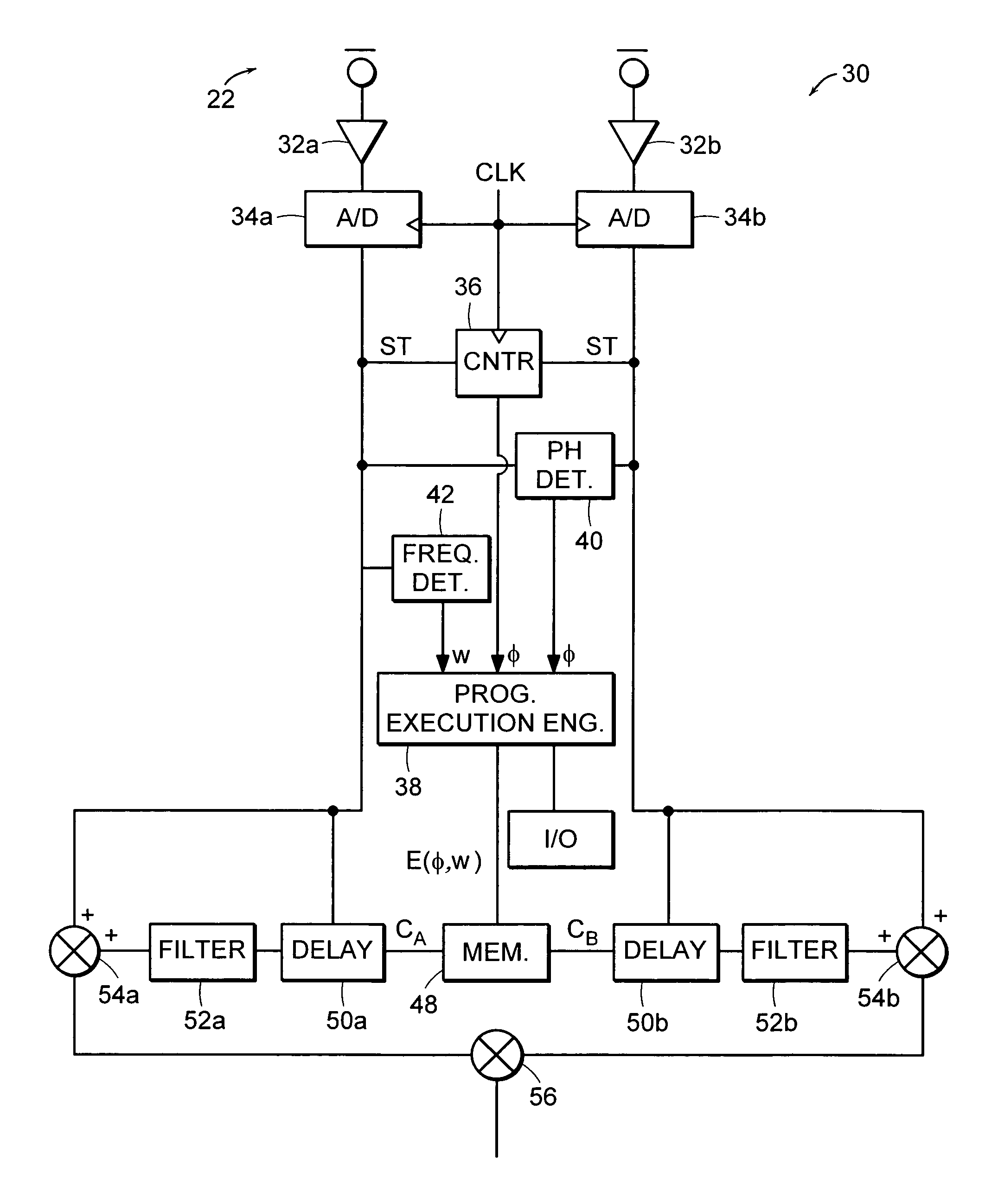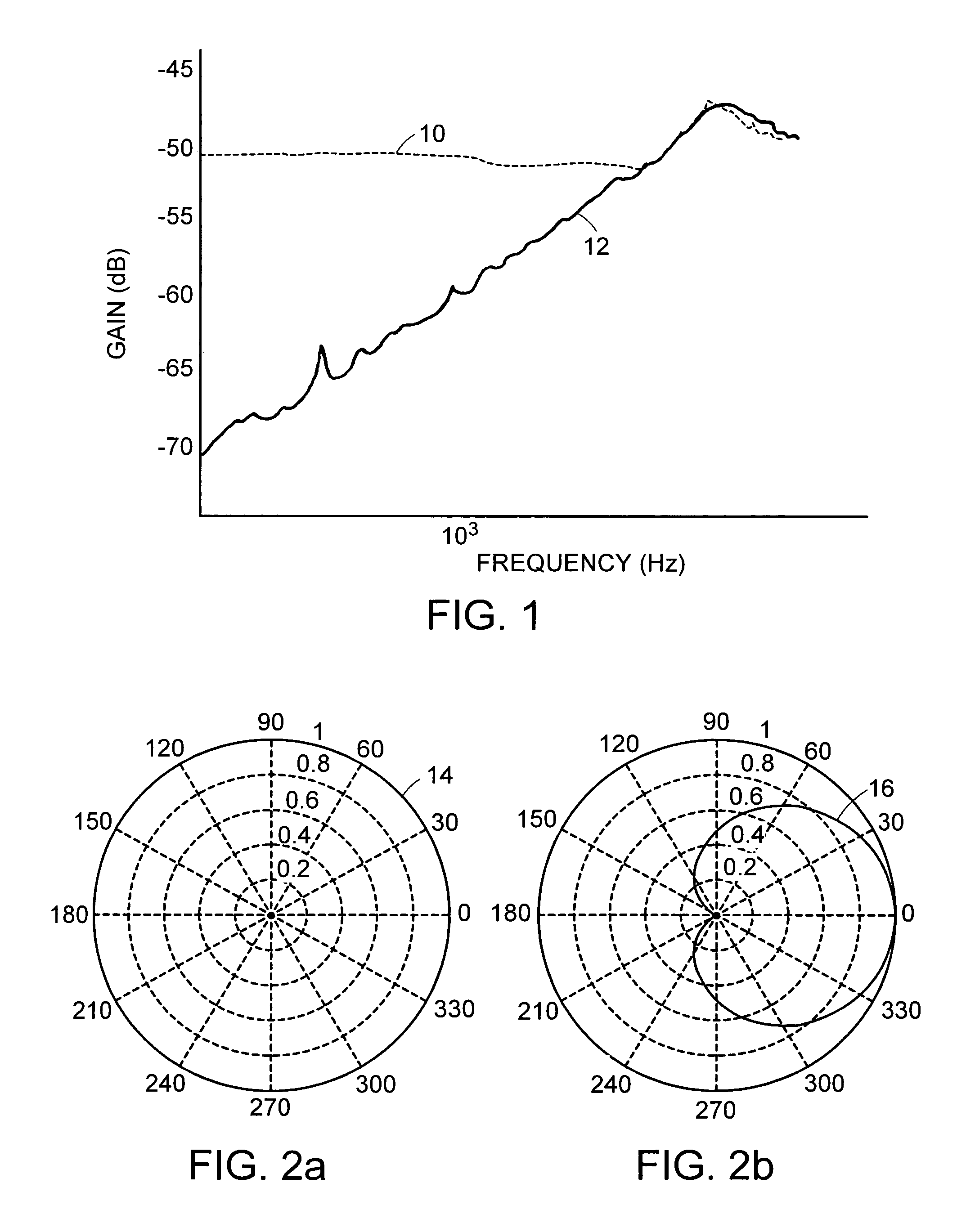System and method for steering the directional response of a microphone to a moving acoustic source
a technology of directional response and microphone, which is applied in the direction of direction/deviation determination system, using reradiation, instruments, etc., can solve the problems of internal acoustic time delay, acoustic source may periodically move, diaphragm vibrating, etc., to reduce the timeframe at which samples are taken, accurate delay and filter weighting coefficient, and accurate processing of electrical signals outpu
- Summary
- Abstract
- Description
- Claims
- Application Information
AI Technical Summary
Benefits of technology
Problems solved by technology
Method used
Image
Examples
Embodiment Construction
[0032]As used herein, the term “far field” generally refers to a microphone spaced and separated from an acoustic source by more than three inches. The term “microphone array” refers to two or more microphones placed along one axis or two axes a spaced and known distance apart. “Angle of incidence” or “angle of impingement,” refers to the angle at which the linear direction of an acoustic wave travels to and contacts the microphone array. For example, if an acoustic source emits an acoustic wave that travels to and contacts a plane in which the microphone array is arranged, and that angle of incidence is perpendicular to the plane, the angle of incidence is said to be at 0°. If the acoustic wavefront travels parallel to the plane or linear axis formed by the microphone array, then the angle of incidence is 90° positive or negative depending on the direction at which the wavefront travels.
[0033]The microphone array can be embedded within a casing of a system, with the pressure-sensit...
PUM
 Login to View More
Login to View More Abstract
Description
Claims
Application Information
 Login to View More
Login to View More - R&D
- Intellectual Property
- Life Sciences
- Materials
- Tech Scout
- Unparalleled Data Quality
- Higher Quality Content
- 60% Fewer Hallucinations
Browse by: Latest US Patents, China's latest patents, Technical Efficacy Thesaurus, Application Domain, Technology Topic, Popular Technical Reports.
© 2025 PatSnap. All rights reserved.Legal|Privacy policy|Modern Slavery Act Transparency Statement|Sitemap|About US| Contact US: help@patsnap.com



